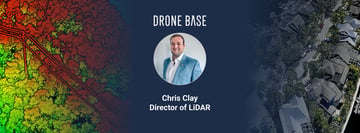Not too long ago, UAVs were not much more than an ambitious, futuristic concept for data collection and aerial imagery. Now that the technology is relatively established, researchers and manufacturers are already looking for ways to build upon that foundation.
Some avenues are more obvious than others. A natural progression is to shift from a single pilot controlling a drone to a single pilot controlling multiple drones. Or, eventually, multiple drones operating independently but cooperatively with a common purpose. This is the promise of the swarm. And it’s far from science fiction.
We’ve already seen the beginnings of what a coordinated swarm of drones could achieve. Intel’s drone light shows are a good example of how hundreds of individual aircraft can work as one.
However, flying in formation to a preprogrammed sequence is one thing. Adapting on the fly to perform more complex tasks as a group is quite another. The latter implies communication within the group, as well as goals that are more dynamic than simple synchronized flight.
So what could drone swarms be used for in the future? Which aspects of unmanned technology need to develop to make them a reality? And where are we at right now?
How could we use drone swarms?
Tackling tasks as a collective unit is a constant theme in the natural world. The reason for working together usually comes down to survival: animals group up because there is safety in numbers. Plenty of predators hunt in packs because it allows them to cover more ground and achieve feats that they couldn’t accomplish alone.
The same logic explains the appeal of drone swarms. Where currently a single drone offers the ability to provide aerial insights and gather data, many applications would benefit from another pair of eyes in the sky.
Drone swarms could cut down the time needed to complete search and rescue, surveillance and mapping missions, for example.
And there are all sorts of military possibilities. Swarms promise lower operating costs, as well as improved operational efficiency and resilience across intelligence gathering, logistics and explosive ordnance detection and disposal.
But the technological challenges are significant. We are only just beginning to see how AI and computer vision can be used to help drones determine their next move and perform tasks without crashing into the first obstacle they come across.
It goes without saying that each component vehicle within a swarm would need to have that same awareness and more. For some advanced operations to become a reality, drone swarms would also need to be scalable and adaptable, bringing together disparate UAVs to form a collective when the task requires it.
Smarter drones with sophisticated communications
The technical challenge is arguably two-fold. On an individual level, drones need to become smarter and more aware, particularly if they are to react in time to other autonomous vehicles working nearby on the same task. Second, there also needs to be an element of communication between these individual systems, a way to share telemetry data, end goals and progress towards those goals.
You could then, depending on the operation, add yet another layer of communications - a way for swarms to fit into the UTM of the future and transmit their intentions to other airspace users.
Research is already well underway in many of these areas. Last year, a group of computer scientists from across Europe showed how large ‘flocks’ of autonomous drones can navigate autonomously and avoid obstacles in confined spaces. And just last month the Unmanned Systems Research Institute at Oklahoma State University was granted permission by the FAA to trial and operate a swarm of fixed-wing drones with one pilot.
The OSU research team has created a “swarm of swarms”, in which groups of drones fly within smaller flocks as part of a larger swarm. Each drone coordinates with a local group leader, which in turn coordinates flights within the overall formation. The OSU team’s work could be applied to several industries, including environmental applications such as weather research.
Elsewhere, the UK government has committed £2.5 million in funding to a ‘Many Drones Make Light Work’ project as part of a Defence and Security Accelerator scheme. The US military’s DARPA branch is also making significant progress. Last month the research agency announced the successful flight of a swarm of drones as part of its Collaborative Operations in Denied Environment program. The drones were able to carry out mission objectives despite GPS being unavailable and operate when communications were offline.
Both of these examples highlight how, when it comes to swarms, defense applications are where the finance and interest appear to be congregating.
But familiarly for the drone industry, innovation is everywhere. In January 2019 a drone swarm contest launched that could have ramifications much closer to home. The 2018 wildfire season was the most destructive on record in California. The Swarm and Search AI Challenge: 2019 Fire Hack asks engineers from around the world to devise drone swarms capable of mapping wildfires and conducting search and rescue missions.
The competition is a joint effort from by the U.S. Air Force Research Laboratory, the United Kingdom’s Defence Science and Technology Laboratory, Wright Brothers Institute and University of Dayton Research Institute. The winners are set to be showcased at AUVSI at the end of April.
Want to learn more about emerging technologies shaping the drone industry? Take a look at our recent post on thermal imaging and enterprise operations.





